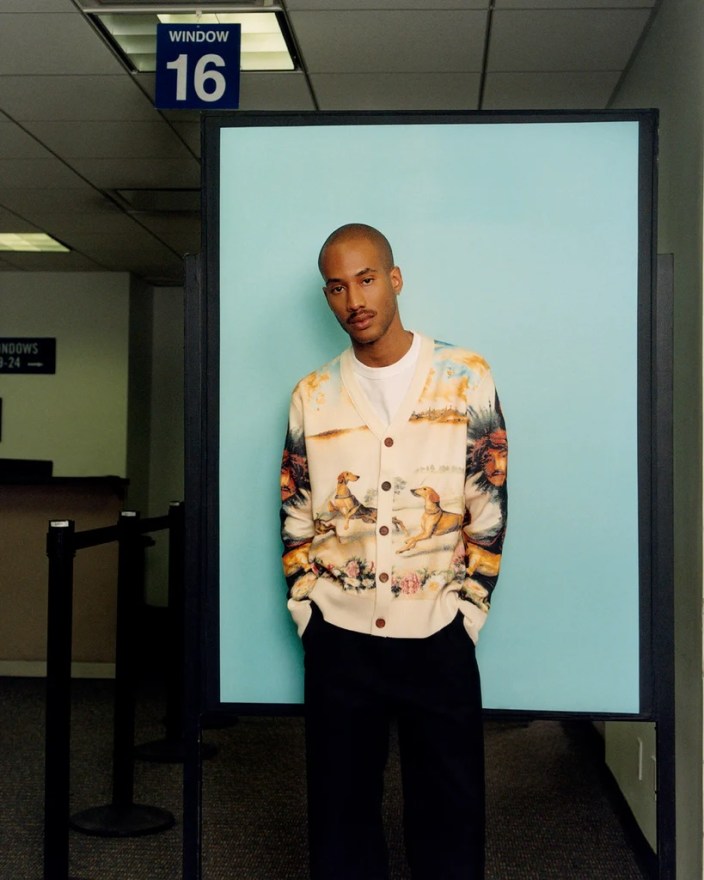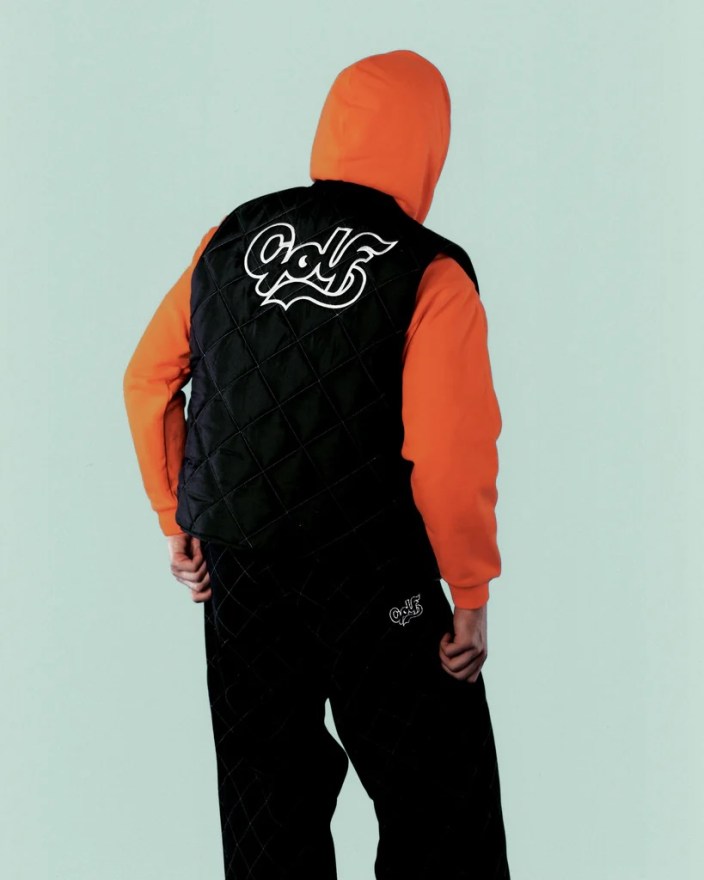
Hip-hop has always had a uniform, in one way or another. Versions of rap’s various aesthetics have been locked into popular consciousness far long than the trends themselves were embraced by the genre’s fans in real life.
Picture a rapper in your mind. Perhaps you imagined a 1980s b-boy, replete with a Kangol bucket hat and Adidas tracksuit. Maybe your envisioned rap star has on baggy jeans, sagging just below his waistline, paired with an undershirt and Timberland boots. Or perhaps they’re more modern, decked out in contemporary couture, with colorful braids and facial piercings.
The point is, there’s always been a particular “look” — until someone comes along and disrupts the status quo. This generation’s disruptor is Tyler The Creator, who defied rap’s sartorial conventions — and everything else about contemporary hip-hop culture — from the moment he and Odd Future thrashed their way into the spotlight, right up until now, with his GOLF clothing line redefining hip-hop’s look for a much preppier set of rebels.
GOLF — also affectionately known as “Golf Wang,” a spoonerism of “Wolf Gang,” part of one of Odd Future’s provocative mottos — distinguishes itself from the usual streetwear mainstays with its concentration on clean basics and classic staples, often in pastels or laid-back patterns that suggest throwback casuals without getting stuck in outmoded mindsets about style. The looks take inspiration from the way Tyler dresses himself, and are often even directly designed by the multitalented rapper and producer.
The resulting styles stand out against the backdrop of the perceived studied shagginess of hip-hop fashion, no matter which era you compare it to. Rather than oversized hoodies, GOLF adherents don button-up cardigans with classic prints of hunting dogs that look like the wearer is draped in a painting straight from the wall of the Art Institute of Chicago.

The popularity of GOLF has manifested itself — and propagated itself, like a perpetual motion engine — in further collaborations with the legacy brands it was influenced by, like Lacoste and Levi Strauss & Co., as well as streetwear mainstays such as Converse, Vans, and Japanese sandal brand SUICOKE. Such is the demand for Tyler’s distinctive eye for established silhouettes with fanciful details that GOLF was spun off in 2016, offering higher-end products; in 2021, it was spun off into its own standalone luxury brand.
The brand also updates genre staples, cleverly calling back to the Golden Era while updating long-respected mainstays with a youthful edge. For instance, there’s perhaps no one who defines hip-hop more thoroughly than the Wu-Tang Clan’s Ghostface Killah, and a signature of the Staten Island product’s style has always been Clarks Wallabees. GOLF has collaborated with the 200-year-old shoemaker for a whimsical take on its classic moccasin, with dainty pastels and embossed heart patterns.
This is a reflection of their creator — pun intended — who has long drawn from the history and core tenets of hip-hop, while imbuing it with his own irreverent sense of humor and whimsy. Take, for instance, the presentation of his most recent album, Call Me If You Get Lost. While it’s presented as a hardcore project in the vein of DJ Drama’s Gangsta Grillz mixtapes, it also draws musically from the breezy style of 1960s big band jazz that is perhaps best recognized by modern audiences as the soundtrack of 007 spoof series Austin Powers.
Tyler often cites BET fixtures such as Rap City and 106 & Park as major inspirations, but also freely admits to lampooning their version of hip-hop, if not outright rejecting the archetypes presented on BET during his childhood. And why wouldn’t he? If you know you’re no 50 Cent, Fat Joe, or Jay-Z, you have two options: Either try to be them, or become something different.

Growing up in LA County as Tyler did, the options would have been even more constrained. After all, the closest thing to a mainstay on mainstream radio and television from the West Coast in the early 2000s was The Game, who loudly espoused his gang ties — something that’s almost as dangerous to imitate in LA as it is to embrace. So Tyler, who found solace in skate culture and the burgeoning fashion scene in the Fairfax district, decided to do things his own way.
Now, to go to one of Tyler’s concerts or his fan-favorite musical festival, Camp Flog Gnaw Carnival, is to go to a GOLF fashion convention, with thousands of young rap fans adorned in floral prints and pastels, where the usual rap show uniform might have consisted of throwback basketball jerseys or fresh-pressed Dickies work pants and plaid button-up shirts. GOLF’s designs bring a pop of prep, but down to earth, like The Creator himself, who often eschews the trappings of rapper wealth — big, glittering chains and ostentatious, name-brand styling — in favor of the sort of comfy clothes he might have been seen in riding his bike down Fairfax.
That ingenuity and dogged individuality eventually paid off for him, both in the musical success of Odd Future and in the prevailing popularity of his GOLF brand — which, fittingly, centers around the flagship store on Fairfax Ave, the center of the strip where he began his defiant journey of self-definition. That there are so many fans of GOLF worldwide is a testament to how truly relatable that story has been.
